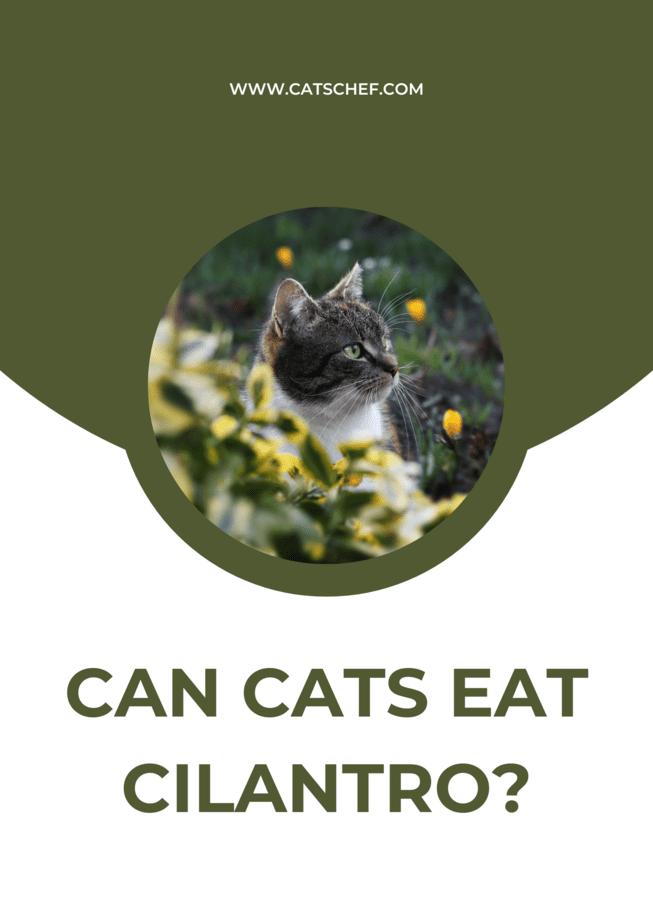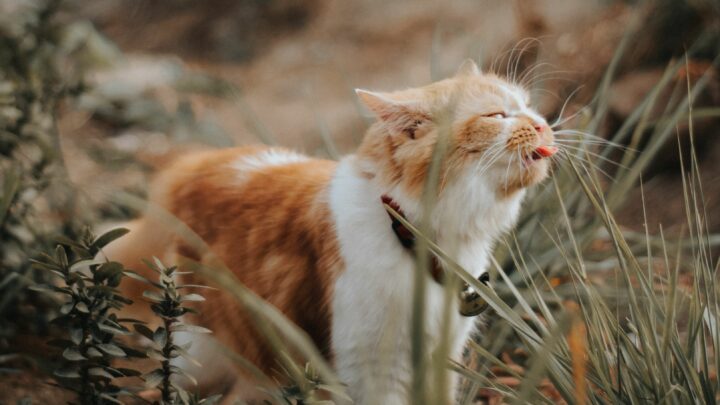Cilantro, Chinese parsley, coriander, dhania, or even Coriandrum sativum (not a Harry Potter spell, regardless of what you might think!). We’re talking about one of the most versatile herbs out there and one of the best herbs that grow in your herb garden. Can cats eat cilantro, though?!
That’s the reason why we’re here, right? Your four-legged friend ADORES munching on everything she can get her paws on. And she certainly ADORES munching on everything green and out of the question. We can agree on one thing: she’s a bit odd, isn‘t she?
She could nibble on every single brand of cat food and cat treats. But, she‘s bored with whatever you serve as a part of her breakfast-in-bed routine. She prefers venturing into your herb garden, meowing and purring at every herb, and (eventually) giving them a sniff, a lick, and a bite.
And, you have a bunch of herbs in your herb garden (and even as a part of your kitchen aesthetics). So, your furry friend‘s desire to scoff down every leaf she lays her eyes on seems like less of an if, and more of a when. How can you put an end to that?
Here‘s the thing, you might not have to! According to our friends over at the ASPCA (American Society for the Prevention of Cruelty to Animals), cats can eat cilantro. Cilantro contains a bunch of vitamins, minerals, and antioxidants that can benefit your cat’s health.
But, there’s always a but when you’re trying to feed your four-legged friend anything that isn’t supposed to be a part of a cat’s diet. Here’s everything you need to know about cilantro (and cilantro’s relationship with your cat) before drawing a conclusion.
What’s cilantro?
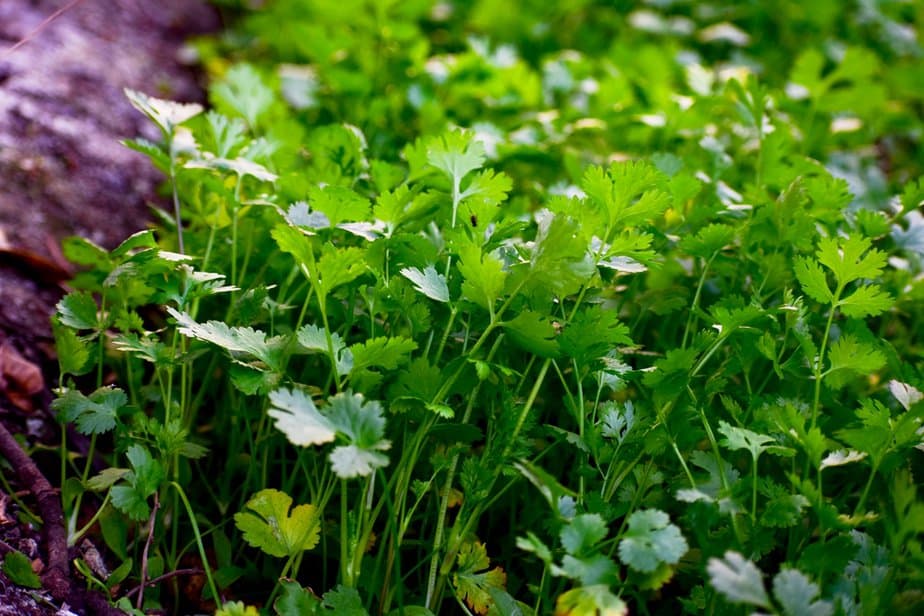
We’ve already mentioned a couple of names humans around the world use when referring to cilantro. Regardless of the name, cilantro’s one of those herbs that’s essential when you’re making Mexican, Indian, Middle Eastern, or Asian recipes.
Cilantro happens to be an herb that belongs to the family of parsley (which explains the name Chinese parsley, as well as the uncanny resemblance). Cilantro’s leaves can be used both fresh and dry (but, mostly fresh).
And, cilantro’s seeds can be used to make cilantro spice (or coriander spice) which has a completely different aroma. Actually, humans describe cilantro aroma as “peppery and lemony“ for the most part. But, some humans describe the aroma as “soapy”.
Cilantro contains natural aldehyde chemicals in the leaves, and these chemicals are also produced throughout the process of soapmaking. We can agree that being described as “soapy” doesn’t sound that bad when you know what’s contained within these cilantro leaves.
We can’t forget about cilantro’s nutritional and health benefits, can we!? Cilantro’s actually packed with vitamins, minerals, and antioxidants. Eating cilantro can provide you with healthy levels of vitamin A, vitamin C, and vitamin K, as well as calcium, magnesium, potassium, and manganese.
And as for the health benefits of cilantro, fresh cilantro can help reduce the risk of numerous diseases. We’re talking about heart disease, diabetes, and obesity. Not to mention the fact that fresh cilantro can also boost your immune system and maintain the health of your skin and hair (Gigi Hadid, who?!)
Cilantro’s pretty great, but can cats eat cilantro? Can cats reap these benefits? Sure, your cat’s herb garden escapades might have been a spur-of-the-moment thing. But, who’s to say she won’t meow and purr your ears off until you agree to let her have another cilantro fiesta?
Can cats eat cilantro, then?
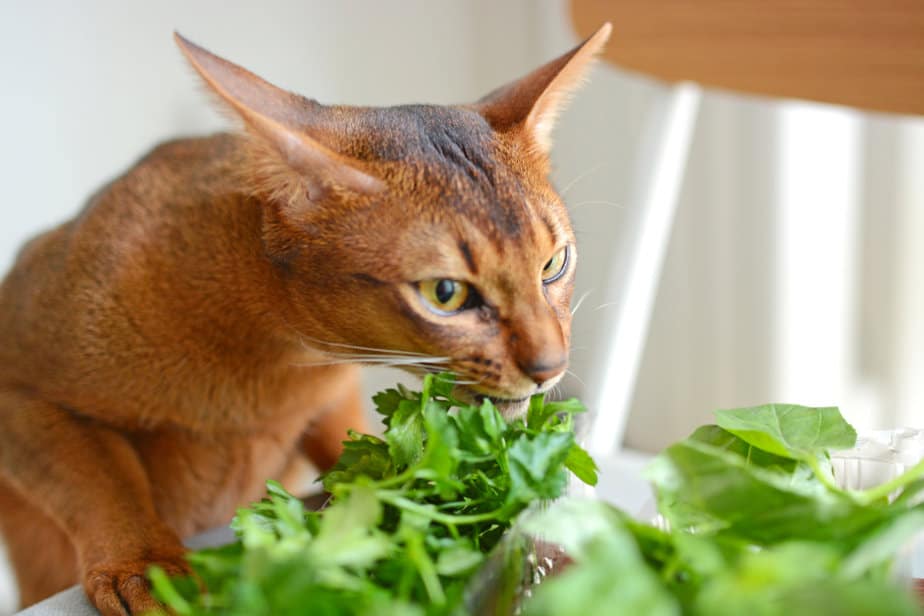
Whose four-legged hasn‘t stuffed their stomach with a bunch of herbs looking for a quick pick-me-up? Whose four-legged friend hasn‘t turned to meowing and purring everyone‘s ears off looking for something to munch on after scoffing down AN ENTIRE BOWL OF KIBBLE?!
That‘s fine, you can go back to breathing because cats can eat cilantro! On the off chance that your cat’s a big fan of cilantro, feel free to surprise her with a sprinkle or two over her favorite Fancy Feast. Or let her chew on the leaves while you’re enjoying some time off in your garden.
But, before you run off to your local farmer‘s market to get MORE cilantro, keep an eye out for a couple of things. First things first, your cat’s an obligate carnivore. She requires a bunch of meat, animal protein, and animal-sourced nutrients in her diet to survive.
She doesn’t require veggies, fruits, and grains the same way humans do. And she doesn’t even possess the enzymes necessary for her digestive system to break down and process most food humans eat on a regular.
Cilantro’s the least of her concerns while she’s on a neverending Keto diet. Cilantro (while packed with vitamins, minerals, and antioxidants) doesn’t really offer much to your cat in terms of her nutritional needs.
Don’t get me wrong, cilantro’s much better than a bunch of other herbs (what would happen if she became obsessed with oregano?). But, cilantro seems completely unnecessary when you think of other cat foods and cat treats she could be munching on.
And, believe it or not, cilantro can have some side effects. Consuming cilantro for the first time when you have a sensitive stomach (speaking for your cat) can cause a bunch of digestive problems, stomach upset, and gastrointestinal irritation. Yikes!
Can cats eat other herbs?
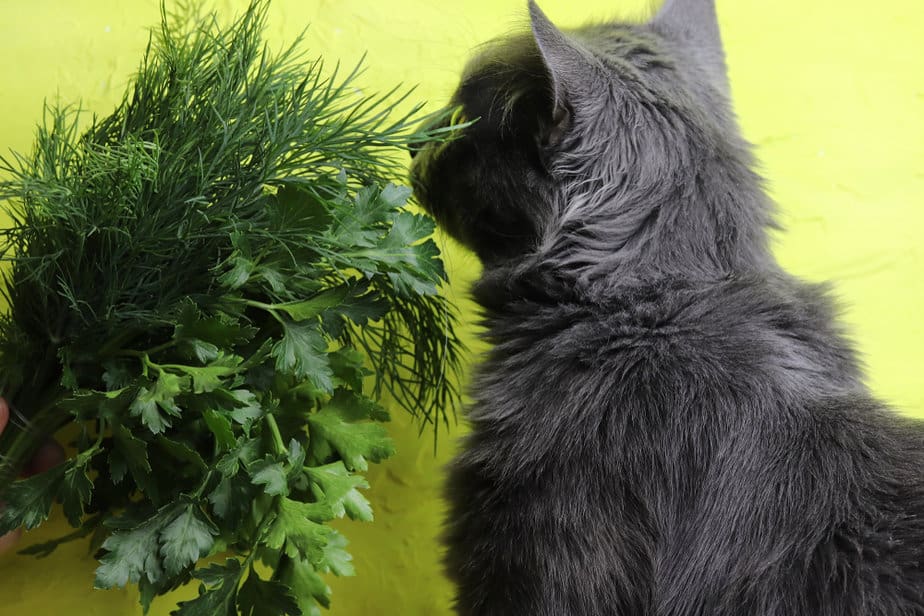
They can and they can’t; cats are never as simple as a “yes” or “no”. They can eat non-toxic plants and safe herbs. But, they have to make sure they don’t accidentally nibble on something they aren’t supposed to eat (oregano!).
Being a cat parent (and a cat lover) you have to make sure you grow the right kind of herbs in your herb garden. Who’s to say your mischievous monsters won’t storm into your herb garden one day and chew on everything she can get her paws on?!
Throw a glance at some of the most common herbs cat parents look up when they’re online. Decide for yourself whether they’re worth growing in your herb garden or not.
1. Calendula
Cats can eat calendula, kind of! Calendula flowers are safe for your four-legged friend, but we can’t say the same about calendula stems and leaves. Calendula stems and leaves contain salicylic acid and that‘s what makes them problematic.
Consuming calendula stems and leaves can cause your cat a bunch of health problems. Calendula does possess anti-bacterial and anti-inflammatory properties. But, applying calendula to your cat’s wounds and scars can cause the wound to heal sooner than recommended (and trap the infection inside!).
2. Chamomile
Cats can’t eat chamomile! Actually, cats can eat a bite or two of chamomile flowers without experiencing any adverse reactions. But, they can’t eat anything more than that because chamomile’s beaming with bad stuff.
Tannic acid, anthemic acid, chamazulene, bisabolol, and volatile oil don’t even sound like something your cat should consume on her day off, do they now? Consuming excessive amounts of chamomile can cause chamomile poisoning.
Some of the most common symptoms to keep an eye out for include weakness, bumps and patches on her skin, dermatitis, drooling, vomiting, and diarrhea. Contact your vet AS SOON AS you notice any of these symptoms.
3. Dandelion
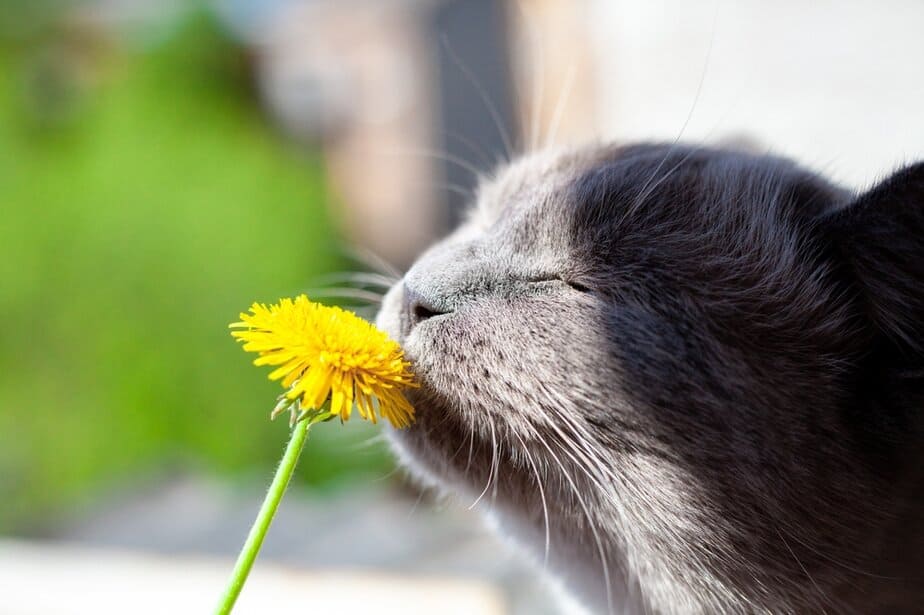
Dandelions are completely safe for your cat! Whether your feline friend prefers to munch on dandelion flowers, dandelion stems, leaves, or even dandelion roots – she’s completely safe. Dandelions don’t contain toxins or anything else that can cause harm to your cat.
4. Catnip
Cats can eat catnip, obviously! There aren‘t any cat parents in this world that haven‘t heard about the potent powers of catnip. Cats ABSOLUTELY ADORE this aromatic herb. They love sniffing it, chewing on it, chasing it around the house, and playing with it.
They become frisky, kittenish, and affectionate when they‘re presented with catnip. Some cat parents might even say that they become high (or at least act like they’re high). That’s understandable since catnip does contain a compound called nepetalactone.
5. Oregano
Cats can’t eat oregano under any circumstances! Fresh, dried, cooked, even powdered – oregano’s off the market for your furry friend. Oregano’s high in substances known as phenols and terpenoids which cats can‘t really break down and process.
Consuming these substances can cause damage to your cat’s digestive system, and lead to a bunch of other health problems (such as anemia). And, the worst form of oregano your cat can consume happens to be oregano oil.
Conclusion
Coming back to our “can cats eat cilantro” thing, let‘s revise what we’ve learned. Cats can eat cilantro because this aromatic herb doesn’t contain pretty much anything that can cause harm to your cat.
But, cilantro doesn’t bring any nutritional value to your cat’s diet. Your cat can munch on cilantro from time to time (when she’s bored of everything else). But, there’s no reason for her to rely on this aromatic herb to provide her with nutritional and health benefits.
